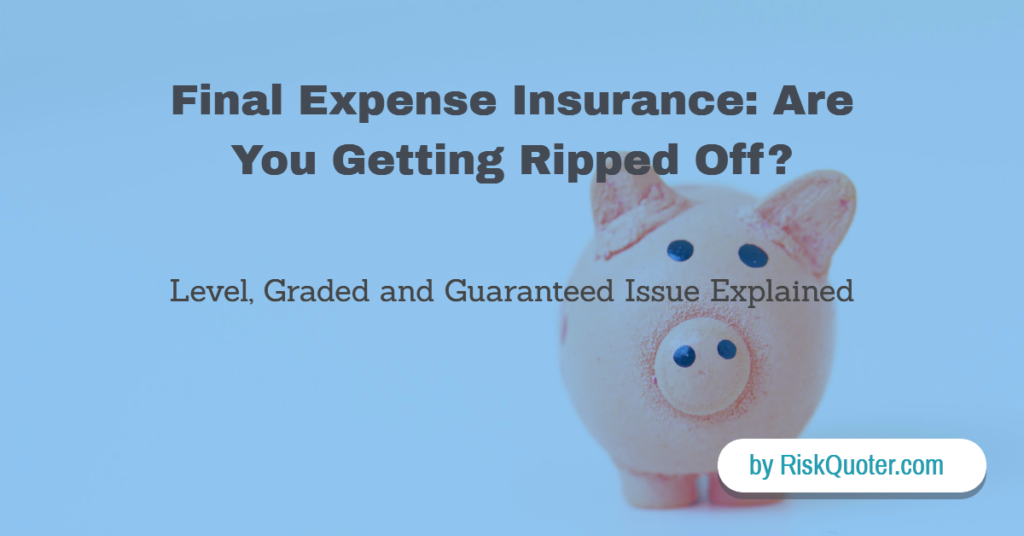Find out if a second-to-die life insurance policy is right for your estate planning needs.
What is Survivorship Life Insurance?
Survivorship life insurance is a type of life insurance policy that covers two lives. The death benefit is paid when the second insured dies. Survivorship policies (also known as “second-to-die” policies) are used for:
Estate Planning Purposes – Your survivorship policy can provide liquidity upon the second insured’s death. The death benefit can be used to fund a trust. The trust may use the life insurance proceeds to pay estate taxes, leave a gift for loved ones, provide for someone with special needs, or leave a legacy for charities.
Business Succession – A second-to-die policy may also be used by business partners to provide liquidity should both partners die simultaneously.
A survivorship life insurance policy coupled with a trust is a powerful tool to consider when planning your estate.
How are Survivorship Life Insurance Policies Helpful in Estate Planning?
Survivorship life insurance policies are helpful because they allow you to protect and pass on your wealth efficiently and effectively.
Some highlights include:
Lower Insurance Premiums – Survivorship life insurance policies cost less than buying two individual life insurance policies. The reason is that second-to-die policies only pay a death benefit upon the second insured’s death versus individual policies that pay two death benefits.
Health Issues – If one person is uninsurable due to a high-risk health issue, they can still be included on a survivorship policy as long as the other person is insurable. Some companies even offer various levels of uninsurable pricing based on the health issue.
Privacy – Life insurance death benefit proceeds pass directly to your beneficiaries, bypassing your will, which is not private. If you use a trust for the policy, you’ll have privacy and the ability to designate how the proceeds are distributed.
The initial steps involve completing the application and paramed exam and obtaining your medical records from your physicians.
Types of Survivorship Life Insurance Policies
There are many types of survivorship life insurance policies, including:
- Guaranteed Universal Life Survivorship Policies
- Whole Life Insurance Survivorship Policies
- Cash Value Accumulation Survivorship Policies
- Index Universal Survivorship Policies
- Term Life Insurance Survivorship Policies
Guaranteed Universal Life Survivorship Policies
If you want a survivorship policy based on guarantees, not interest rate and dividend performance assumptions, look no further than a guaranteed universal life survivorship policy.
With this policy, the death benefit and premium you pay are guaranteed.
With some life insurance companies, you can choose the duration you want coverage to last up to age 120.
There are no dividends or interest rate assumptions. Everything is guaranteed.
While this policy may accumulate a minimal cash value, the death benefit guarantees are the focus here.
Whole Life Insurance Survivorship Policies
A whole life insurance survivorship policy can accumulate cash values and pay dividends.
You have several choices when you purchase a survivorship whole life insurance policy.
Coverage Amount – You have to review whole life insurance policies carefully. The policy combines whole life insurance (base amount) and supplemental coverage (typically annual renewable term life insurance).
The combination of base and supplemental coverage makes the pricing more attractive, but you could face substantial premium increases due to annual renewable term rates when you get old.
Dividends – The number one thing you should know about dividends is that they are not guaranteed.
And that is important because dividends are typically illustrated and used to lower your overall premium.
If dividends perform, great. If they don’t perform as expected, it can affect your future death benefit amount and the premium you pay.
Cash Values – Your survivorship policy may be illustrated by showing substantial cash value accumulation over the years. While that’s great, your beneficiaries only receive the death benefits, not the cash value.
You may be able to withdraw cash from your policy in the future but keep in mind that any withdrawals will affect how the policy performs.
Cash Value Accumulation Survivorship Policies
Cash value accumulation survivorship policies are designed to accumulate cash value over time.
A universal life insurance cash value accumulation policy will often be the lowest-cost policy.
The reason is that the policy’s guarantees don’t last as long, and your policy is subject to interest rate, cost of insurance, and administrative expenses that will change over time.
This policy typically has a minimum guaranteed interest rate (1-2%) and a non-guaranteed interest rate.
The non-guaranteed interest rate is set by the insurance company each year.
Suppose you’re willing to take on the risk mentioned above. In that case, a cash value policy is a good option as long as you understand that you will need to pay additional premiums in the years when the policy does not perform as originally illustrated.
The problem with this type of policy is that additional premiums, if required, usually happen in later years when you’re older and may not have the resources to pay.
The potential benefit of this policy is that you may be able to withdraw cash from it in later years if needed, or if you decide to cancel it in the future, you may get some money back.
Index Universal Survivorship Policies
Index universal survivorship life insurance policies are another cash value accumulation policy type.
With this policy, there is a guaranteed interest rate and an index interest rate.
The index interest rate is based on your chosen stock market index.
You might choose an S&P index, a dividend index, or other market indexes depending on the life insurance company you choose.
If picking more than one index, you would select the percentage of your cash value invested in each index.
The potential benefit is that you may accumulate more substantial cash value over time than a traditional policy.
Term Life Insurance Survivorship Policies
At one time, West Coast Life Insurance Company offered a term life insurance survivorship policy.
It’s no longer available, and we’re unaware of other companies offering this option.
At the time, it was used to set up estate planning at a lower cost until the insureds were ready to move forward with permanent survivorship life insurance.
What is available now with some companies is the ability to take individual term life policies for you and your spouse and convert those policies into one survivorship policy.
First to Die Survivorship Life Insurance
A first-to-die (a joint universal life insurance policy) pays the death benefit upon the first insured’s death.
This type of policy is not very common. In fact, the only company we know that offers a first-to-die policy is State Farm.
How to Buy Survivorship Life Insurance
Once you’ve decided that survivorship life insurance is right for you, it’s time to choose which type of policy works best. That’s where we can help you.
We’ll explain the options and provide you with the company illustrations so you can make an informed decision.
There are many additional features available for survivorship policies that may interest you, such as:
Living Benefits – Some companies offer this as an optional life insurance rider, where a portion of the death benefit may be accelerated in the event of a chronic or terminal illness.
Long Term Care – Some policies offer long-term care riders that can be used to provide benefits while in a nursing home or long-term care facility.
Term Life Insurance – annual renewable term life insurance may be available with your policy. The benefit is that including some term life may lower your overall cost. The potential detriment is that the annual rates may increase substantially as you age.
Estate Preservation – If your policy is set up improperly, it could be included in your estate. This additional feature addresses this by providing an additional death benefit in the early years.
Policy Split Option – In case of divorce or changes to tax laws, this option allows you to split the survivorship policy into two individual policies.
Some survivorship life insurance illustrations are complicated and lengthy to read (think 15-35 pages). We’ll walk you through these illustrations once we know exactly what you are looking for.
We may have 3-4 or more conversations about coverage. You may want a family member or advisor to be part of the conversations, which is fine and encouraged.
Survivorship Life Insurance Consumer Guides
Several life insurers publish consumer guides for your review.
- Protective Life
Final Thoughts
We offer the best and most competitive life insurance companies and policies available in the market.
We’ll show you what we offer and how we can help you.
And with our service, there is never any pressure or obligation.
We’ll give you the information you need to make an informed decision, and should you change your mind, tell us to close your file.
Recent Articles:







